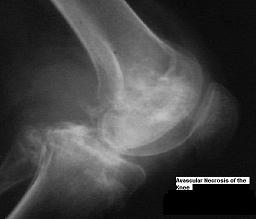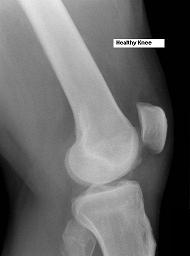- What is Avascular Necrosis (AVN, Osteonecrosis, Aseptic Necrosis, Ischaemic Necrosis, Femoral Head Necrosis)
- Statistics on Avascular Necrosis (AVN, Osteonecrosis, Aseptic Necrosis, Ischaemic Necrosis, Femoral Head Necrosis)
- Risk Factors for Avascular Necrosis (AVN, Osteonecrosis, Aseptic Necrosis, Ischaemic Necrosis, Femoral Head Necrosis)
- Progression of Avascular Necrosis (AVN, Osteonecrosis, Aseptic Necrosis, Ischaemic Necrosis, Femoral Head Necrosis)
- Symptoms of Avascular Necrosis (AVN, Osteonecrosis, Aseptic Necrosis, Ischaemic Necrosis, Femoral Head Necrosis)
- Clinical Examination of Avascular Necrosis (AVN, Osteonecrosis, Aseptic Necrosis, Ischaemic Necrosis, Femoral Head Necrosis)
- How is Avascular Necrosis (AVN, Osteonecrosis, Aseptic Necrosis, Ischaemic Necrosis, Femoral Head Necrosis) Diagnosed?
- Prognosis of Avascular Necrosis (AVN, Osteonecrosis, Aseptic Necrosis, Ischaemic Necrosis, Femoral Head Necrosis)
- How is Avascular Necrosis (AVN, Osteonecrosis, Aseptic Necrosis, Ischaemic Necrosis, Femoral Head Necrosis) Treated?
- Avascular Necrosis (AVN, Osteonecrosis, Aseptic Necrosis, Ischaemic Necrosis, Femoral Head Necrosis) References
What is Avascular Necrosis (AVN, Osteonecrosis, Aseptic Necrosis, Ischaemic Necrosis, Femoral Head Necrosis)
Avascular necrosis (AVN) is cellular death of the components of bone, including the bone marrow, due to the impairment of the bones own blood supply. AVN is a component of a number of conditions and usually the epiphysis of long bones, such as the femoral and humeral heads and the femoral condyles, but small bones have also been known to be afffected.
Statistics on Avascular Necrosis (AVN, Osteonecrosis, Aseptic Necrosis, Ischaemic Necrosis, Femoral Head Necrosis)
Frequency depends on the site involved. The most common site is the hip; other locations include the carpals, talus, and humerus. In most countries, exact figures on incidence and prevalence are unknown.
One Japanese survey estimated that 2500-3300 cases of AVN of the hip occur each year; of which, 34.7% were a result of corticosteroid abuse, 21.8% to alcohol abuse, and 37.1% to idiopathic mechanisms. A French study reported AVN in 4.3% of allogenic bone marrow transplant recipients.
Race: No racial predilection exists except for AVN associated with sickle cell disease and hemoglobin S and SC disease, which predominantly are diagnosed in people of African and Mediteranean descent.
Sex: The male-to-female ratio depends on the underlying cause, although primary AVN is more prevalent in men. The overall male-to-female ratio is 8:1.
Age: Age at onset depends on the underlying cause. Primary AVN most often occurs during the fourth or fifth decade and is bilateral in 40-80% of cases. On average, women present almost 10 years later than men.
Risk Factors for Avascular Necrosis (AVN, Osteonecrosis, Aseptic Necrosis, Ischaemic Necrosis, Femoral Head Necrosis)
Avascular necrosis has several causes. Loss of blood supply to the bone can be caused by an injury (trauma-related avascular necrosis or joint dislocation) or by certain risk factors (nontraumatic avascular necrosis), such as some medications (usually steroid basesd), steroid abuse in general, blood coagulation disorders, or alcohol abuse. Increased pressure within the bone also is associated with avascular necrosis. The pressure within the bone causes the blood vessels to narrow, making it hard for the vessels to deliver enough blood to the bone cells.
Progression of Avascular Necrosis (AVN, Osteonecrosis, Aseptic Necrosis, Ischaemic Necrosis, Femoral Head Necrosis)
The natural history of osteonecrosis is directly linked to the size and level of the necrosis. Very small lesions (involvement of less than 15% of the femoral head) may resolve without any further treatment. Conversly, lesions involving greater than 50% of the femoral head progress to collapse, and ultimately require in total hip arthroplasty.
Symptoms of Avascular Necrosis (AVN, Osteonecrosis, Aseptic Necrosis, Ischaemic Necrosis, Femoral Head Necrosis)
In the early stages of avascular necrosis, patients may be asymptomatic. However, as the disease progresses most patients will begin to experience joint pain; at first, only when putting weight on the affected joint, and eventually even when resting. Pain usually develops gradually and may be mild or severe.
If the level of necrosis progresses further and the bone and surrounding joint surface collapse, pain may develop or dramatically increase. The pain may be severe enough to limit the patient’s range of motion in the affected joint.
In some cases, particularly those involving the hip, disabling osteoarthritis may develop.
The period of time between the first symptoms and loss of joint function is different for each patient, ranging from several months to more than a year.
How is Avascular Necrosis (AVN, Osteonecrosis, Aseptic Necrosis, Ischaemic Necrosis, Femoral Head Necrosis) Diagnosed?
In the earliest stages of Avascular necrosis plain x-rays are often normal. A magnetic resonance image (MRI) is the key that allows us to detect AVN at its earliest stages.
The x-ray image below is that of avascular necrosis of the knee. The damage is quite extensive, especially when compared to a healthy knee on the right.
 |
 |
Prognosis of Avascular Necrosis (AVN, Osteonecrosis, Aseptic Necrosis, Ischaemic Necrosis, Femoral Head Necrosis)
The amount of disability that is resultant in sufferers of avascular necrosis depends on what part of the bone is affected, how large the affected area is, and how effectively the bone is able to rebuild itself. With early diagnosis and proper treatment, most people with avascular necrosis can lead almost normal, productive lives.
How is Avascular Necrosis (AVN, Osteonecrosis, Aseptic Necrosis, Ischaemic Necrosis, Femoral Head Necrosis) Treated?
- Non-steroidal anti-inflammatories – for pain;
- Avoid weight bearing – take pressure off the joint (e.g. crutches); in some cases this allows the body to self-heal;
- Range-of-motion exercises;
- Electrical stimulation – to stimulate natural growth of the bone;
- Avoid excessive alcohol consumption;
- Treat alcoholism – if the problem is caused by alcoholism;
- Discontinue corticosteroid use – slowly under medical advice, since stopping quickly causes problems.
Surgical treatments:
- Core decompression;
- Osteotomy;
- Bone graft;
- Joint replacement (arthroplasty).
Avascular Necrosis (AVN, Osteonecrosis, Aseptic Necrosis, Ischaemic Necrosis, Femoral Head Necrosis) References
- Solomon L, Warwick D, Apley AG, Nayagam S. Apley’s Concise System of Orthopaedics and Fractures (2nd edition). London: Arnold; 2001. Book
- Cotran RS, Kumar V, Collins T, Robbins SL. Robbins Pathologic Basis of Disease (6th edition). Philadelphia, PA: WB Saunders Company; 1999. Book
- Kumar P, Clark M (eds). Clinical Medicine (5th edition). Edinburgh: WB Saunders Company; 2002. Book
- Nasser SM, Ewan PW. Depot corticosteroid treatment for hay fever causing avascular necrosis of both hips. BMJ. 2001;322(7302):1589-91. Abstract | Full text
- Osteonecrosis [online]. Bethesda, MD: National Institute of Arthritis and Musculoskeletal and Skin Diseases; 2008 [cited 8 April 2008]. Available from: URL link
- Avascular necrosis [online]. Philadelphia, PA: Rothman Institute Orthopaedics; 2008 [cited 8 April 2008]. Available from: URL link
- Sharma R. Avascular necrosis.
- Total joint replacement program [online]. Baltimore, MD: University of Maryland Medicine; 2008 [cited 8 April 2008]. Available from: URL link
Drugs/Products Used in the Treatment of This Disease:
- HealthSense Piroxicam Capsules (Piroxicam)
- Nurofen (Ibuprofen)
- Nurolasts (Naproxen sodium)
- Voltaren Rapid 12.5/ 25/ 50 (Diclofenac potassium)
All content and media on the HealthEngine Blog is created and published online for informational purposes only. It is not intended to be a substitute for professional medical advice and should not be relied on as health or personal advice. Always seek the guidance of your doctor or other qualified health professional with any questions you may have regarding your health or a medical condition. Never disregard the advice of a medical professional, or delay in seeking it because of something you have read on this Website. If you think you may have a medical emergency, call your doctor, go to the nearest hospital emergency department, or call the emergency services immediately.







